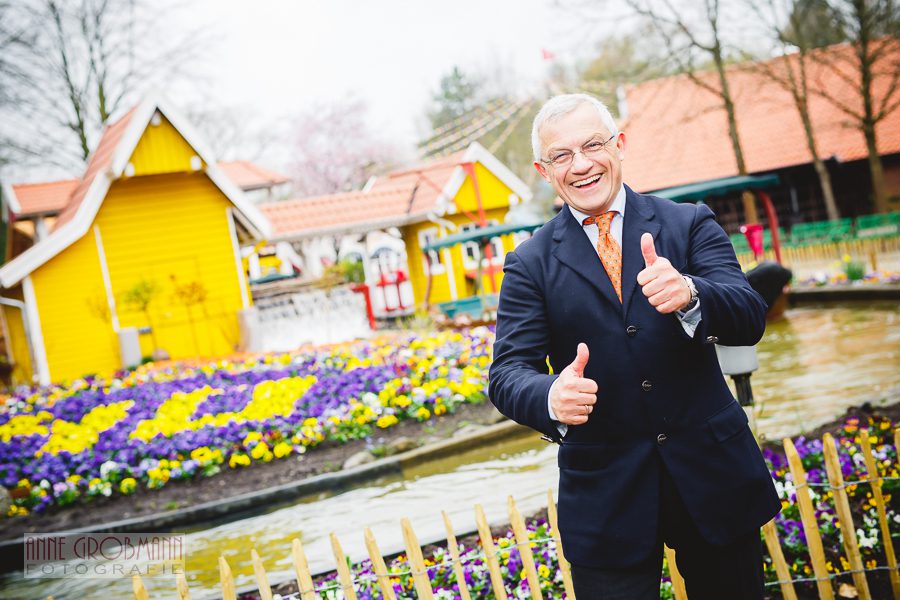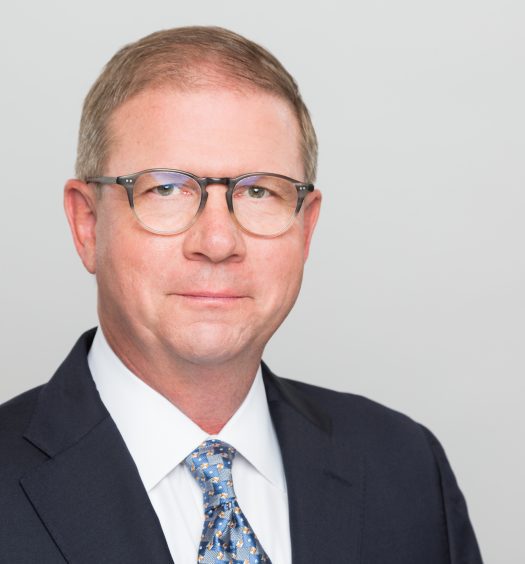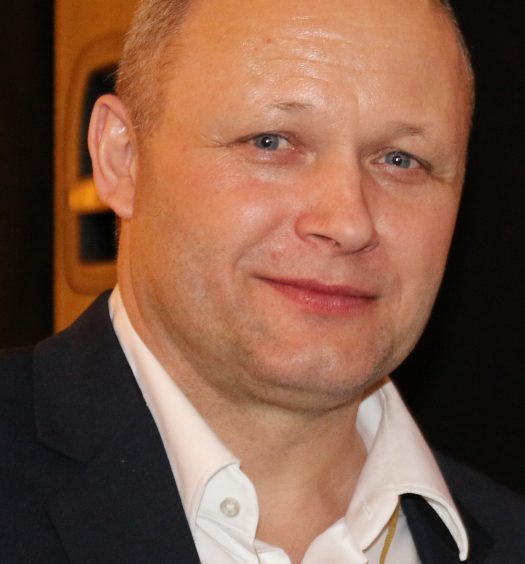Hansa-Park in Germany celebrated its 40th anniversary in 2017 and here InterPark editor Andrew Mellor talks to owner Andreas Leicht about his introduction to the industry, the park’s development since 1977, its unique (in Germany) location, future developments and more
InterPark: When did you first become involved in the park/attractions industry and in what capacity?
Andreas Leicht: I first experienced the industry when I was about 10 or 11.My father worked as a tax adviser and one of his clients was the owner of Hansa-Park. It was fun accompanying him when he visited parks. My first experience of actually working in a park was at 16 in the summer holidays at Hansa-Park. Subsequently my father ended up buying the park and I then began working full time, firstly in the show department and then the ride department.
IP: Who runs Hansa-Park today?
AL: Myself and my wife Claudia.
IP: Can you briefly describe the park and its latest developments?
AL: I always tell people we started as a brown field site. We took over from a licensee of Legoland Billund and turned it into a theme park with a theme of its own, the Hanseatic League. Planning permits are very strict in Germany and we changed Hansa-Park from a former exhibition park to the modern park we have now, visualising our name Hansa as the theme.
This year we have concentrated on the rebuilding of the heritage building and buildings in the entrance area to change the character of the park. The Hanseatic League (a medieval trading alliance formed by cities from all over Europe) had contact with Spain so we have added a new attraction Barcos del Mar in 2018 in that area and the Kärnapulten ride (a Gerstlauer Sky Fly) in the Empires of the North area in 2017. We plan each investment on our theme. We work under a general permission plan which took decades to achieve because of our neighbours and the fact that we are so close to the sea. It’s a fantastic area so the authorities look very keenly at all of our developments and what we are planning.
IP: What would you say are the park’s strongest selling points?
AL: We have three. Firstly, our location on the Baltic Sea. It is fantastic having the blue sea behind the resort only about 250m away. It makes the atmosphere in the park very special and we make use of this view on many of our rides. Also, we are turning it into the park with a special Hanseatic theme, a very authentic theme. And finally, we are very family friendly due to being in one of the most popular family holiday regions of Germany.
Importantly our children’s price is up to 14-years-old too, whereas most parks are up to 12-years-old. The number of rides people can ride together is also significant and in all areas of the park guests can always stay together without going off to do an attraction some members of the family can’t ride because of their age. Each part of the park is for everyone and we try to keep families together in each area.
IP: What has been your most successful attraction in terms of return on investment?
AL: The Oath of Kärnan, our hypercoaster which we introduced in 2015. It is the third highest coaster in Europe and the second highest in Germany and features an 80m tower which houses part of the ride. It was an over €25m investment and has been very successful.
IP: How do you incentivise your staff to do the best job they can?
AL: It boils down to us being an example to our team, which we refer to as the ‘Hansa-Park family,’ and living up to the standards we want them to achieve. The senior crew around us (as the owners) set examples which then filter right down to all the employees. It’s what family owned parks are all about. We have up to 850 employees so it never ends showing them examples of what to do. The people at the top have to be the example. We do many lessons and much professional training of employees; some do up to 10 lessons/courses before they actually start work for us.
IP: What do you feel are the main challenges facing park operators in general today, apart from competition from other parks?
AL: One of the main challenges is to accept in a certain way that you have a natural limit for further growth as far as quantity is concerned but not quality. This has to be answered at each park individually. You have to search for quality growth so need to find an authentic theme and anchors in your own region. This is the challenge and I’m fully convinced of this strategy. You also have to set a price for what you offer and what guests can do in the time they are with you.
We have seen 15,000 additional beds being added in our area in recent years and 7,000 more are coming so we’ve really seen a holiday boom in the area. In fact it is one of the three most popular holiday areas in Germany and we take advantage of this.
Another challenge for us is that in Germany there are lots of fairs (carnivals) too which create more competition, while there is competition in general for the free time of families and their budgets, so they have to decide what to spend it on.
IP: What do you see as some of the key trends in the European parks industry at the moment?
AL: Virtual reality (VR) and augmented reality (AR). We have decided not to add VR at Hansa-Park as we don’t want to separate people from each other. We think it’s better to offer AR and we try to get more digital opportunities in the park in this way.
We know we have to get more digital in the park as people have digital lives so we offer free WiFi, for example. Our guests can also scan their phones and receive a feedback system to create a dialogue with our back office for different things, such as something they wish to bring to our attention. This also helps the operational team regarding checking restrooms, etc. It’s not a disruptive trend though.
But the basics are still the same as ever. You have to offer a family friendly atmosphere for friends and families to have a good time in the park and a comfortable time, so they can make the most of their leisure time. Trends can take us away from the basic wish to leave our normal life behind and enjoy a fantastic atmosphere, be treated well and have good quality experiences and no disturbances. Trends should be new methods to achieve this.
IP: Do you think it is necessary for parks to invest in new attractions every year or can other things be done to keep visitors coming back?
AL: Parks should offer something new every year but every three to five years it is necessary to add a major new attraction.
IP: What future development plans are in the pipeline for Hansa-Park?
AL: We will make a big announcement about our future plans during the EAS event in Amsterdam in September. As well as this, we will be redeveloping our main restaurant in 2019 and retheming the Nessie coaster.
Personally speaking
Not a lot of people know this but I am very good at … telling jokes
The most interesting place I’ve ever been to is … Hansa-Park!
My favourite film is … Mr. Hobbs takes a vacation, a 1962 film starring James Stewart and Maureen O’Hara
When I’m not working I like to … play sport
The person who has influenced me most is … my wife Claudia
My favourite musician/band is … Sammy Davies, Jnr., and the Rat Pack. I like the classics and movie music
If I could invite a celebrity to dinner it would be … former German chancellor Helmut Schmidt if he was still alive
My unfulfilled ambition is … to travel more around the world to see many more parks in our business and the originals of elements we use in our park
To really chill out I … listen to a CD of the Westminster Abbey choir
I really dislike … dishonesty



















